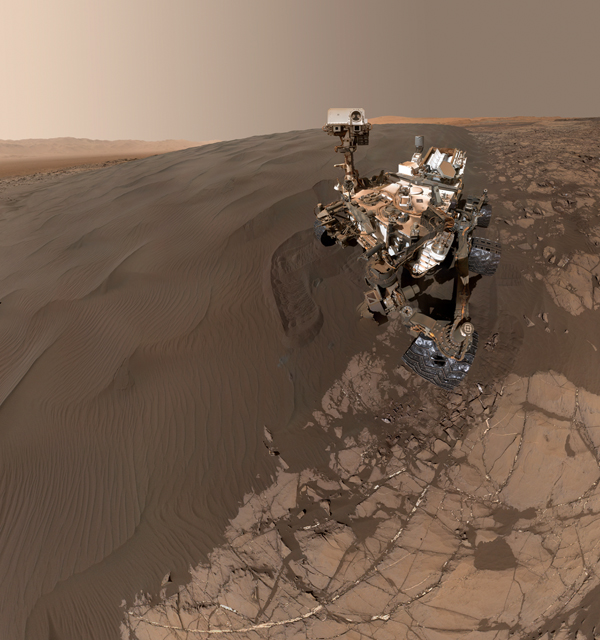NASA’s Curiosity shared a spectacular new selfie that combines 57 images, showing the rover on the edge of Namib Dune. The location in question is at the northwestern flank of Mount Sharp, and is currently being investigated to see how “active” the dune is.
Curiosity has been at this location for the past few months, observing how wind moves and sorts sand particles on the Martian planet. If there is movement, Curiosity’s instruments will be able to detect the strength and direction.
Since settling down to camp, Curiosity has collected three different samples, though the third sample couldn’t be processed properly because of an instrument failure. Right now, NASA engineers are running diagnostics to figure out what went wrong and how to fix it. Analysis from the other two samples is still ongoing.
Next up on Curiosity’s agenda is to drill to collect rock-powder samples, though NASA hasn’t decided on a site just yet. All of the rover’s efforts are an attempt to better understand how Mars went from a planet that contained surface water to the dry landscape it is today.
-
Curiosity Finds More Evidence of Water on Mars at Gale Crater
NASA’s Curiosity rover may have stumbled upon a spot on Mars where a massive lake used to be. According to NASA, Curiosity turned up evidence that suggests a 96-mile wide stretch, known as the Gale Crater, may have once been…
-
Curiosity Rover Analyzes Soil Sample, Finds Organic Compounds
NASA shared its sort-of-kind-of earthshaking news at a press conference on Monday, revealing that after thorough soil analysis, evidence of organic compounds have been found on Mars. The Red Planet looks like a barren, lonely dessert, but its landscape actually…
-
Curiosity rover confirms ancient Mars lakes
NASA’s Curiosity rover sent back new info that all but confirms Mars was once covered in lakes and streams. This is exactly the information scientists set out to discover. A few years after Curiosity landed on the Martian planet’s surface, we…

















